The tropic of cancer bisects the city of Chiayi (嘉義). The morning heat is, predictably, intense. But the sky is blue and hued with promise.
Travelers brave the heat to pose for photos outside the carriages lined up at the end of platform one. The pervasive excitement is understandable.
HISTORIC RAILWAY
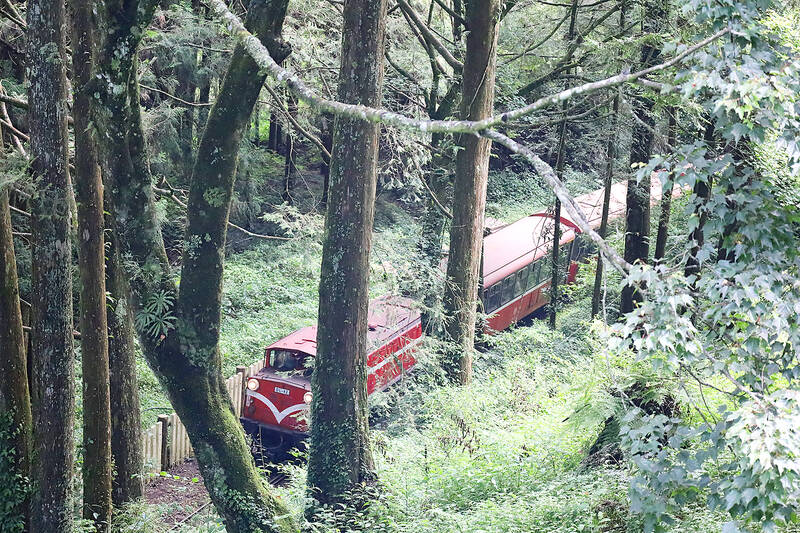
Photo: Thomas Bird, Taipei Times
The Alishan Forest Railway (阿里山森林鐵路) was engineered by the Japanese to carry timber from the interior to the coast. Construction began in 1906. In 1912, it opened to traffic, although the line has been lengthened several times since.
As early as the 1930s, the line had developed a secondary function as a tourist novelty.
Logging officially ended in 1988, but the forest railway has remained popular among tourists.
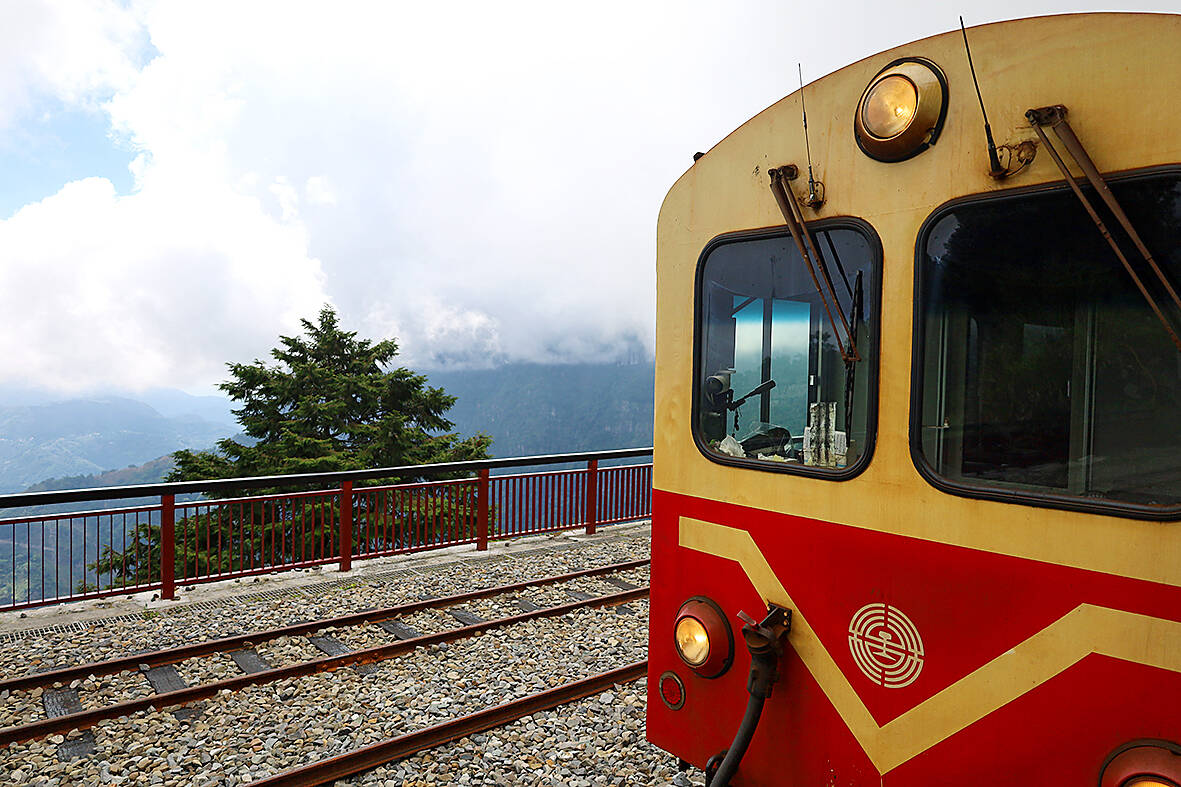
Photo: Thomas Bird, Taipei Times
Today, the image of a red locomotive chugging through tree-coated highlands is splashed across everything from packets of oolong tea to biscuit tins.
Since 2009, however, it has been impossible to travel along the track’s entirety. Typhoon Morakot wrought destruction on Chiayi County. Landslides warranted extensive repair work and it wasn’t until July this year that the service reopened.
ON TRACK
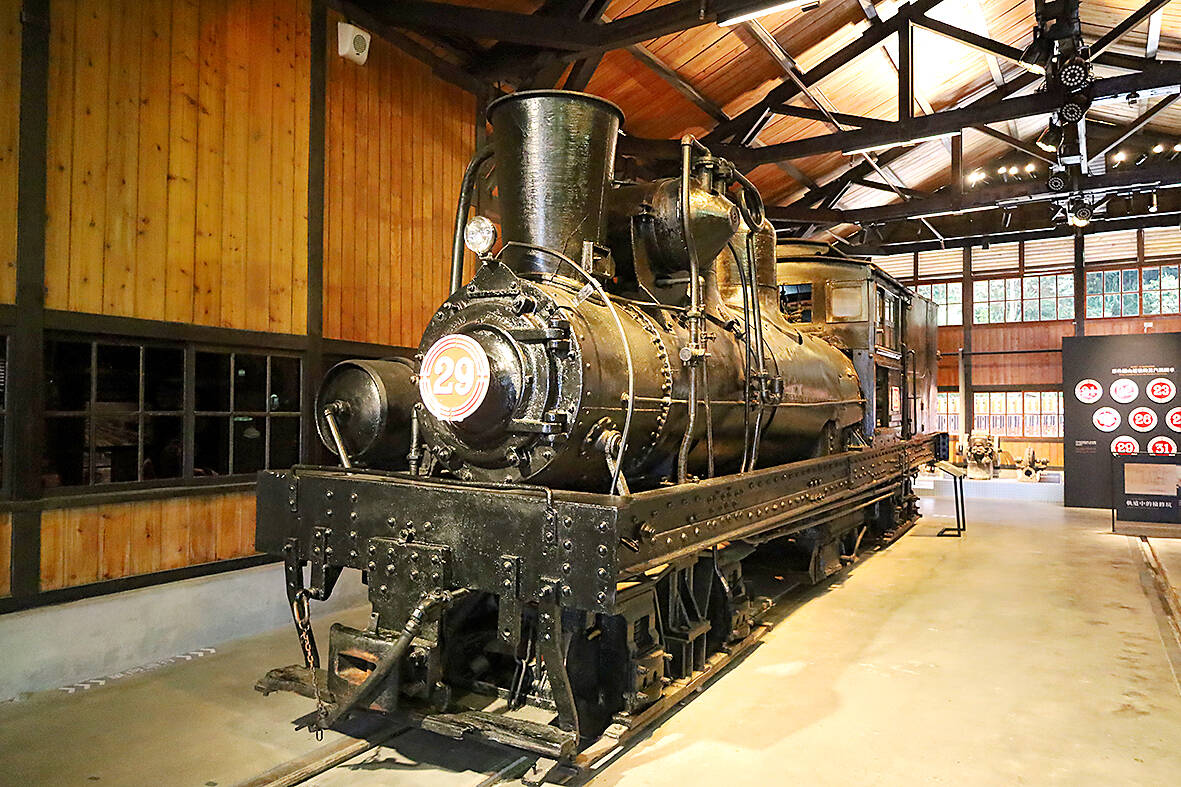
Photo: Thomas Bird, Taipei Times
Carriages are snug — rows of two seats and one seat intersected by a narrow gangway. There’s a bathroom and air-conditioning but this is where luxury ends.
At 10am, we shunt into motion, rolling towards our first scheduled stop Beimen (北門).
The motion of the train — the track is only 762mm wide — waddles from side-to-side as if being towed by an ox.
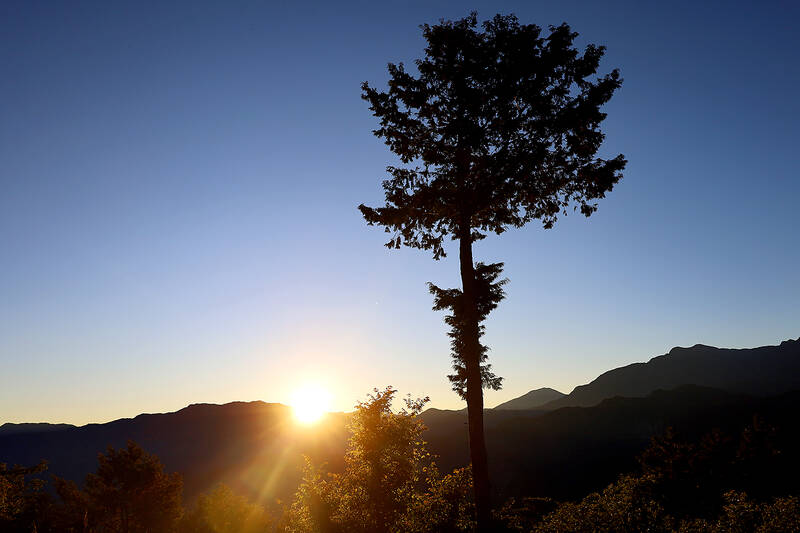
Photo: Thomas Bird, Taipei Times
Ahead of each level crossing the horn bellows until we get to Chiayi Garage Park, where several decommissioned trains and freight cars have been retired.
Groups of sightseers wave at us as we trundle past, as if we were celebrities.
Beyond Lumachan (鹿麻產), a woody Japanese-style stationhouse, the train rolls steadily past rustic farmhouses overlooking fields of waxy leaves cradling sweet Formosan pineapples.
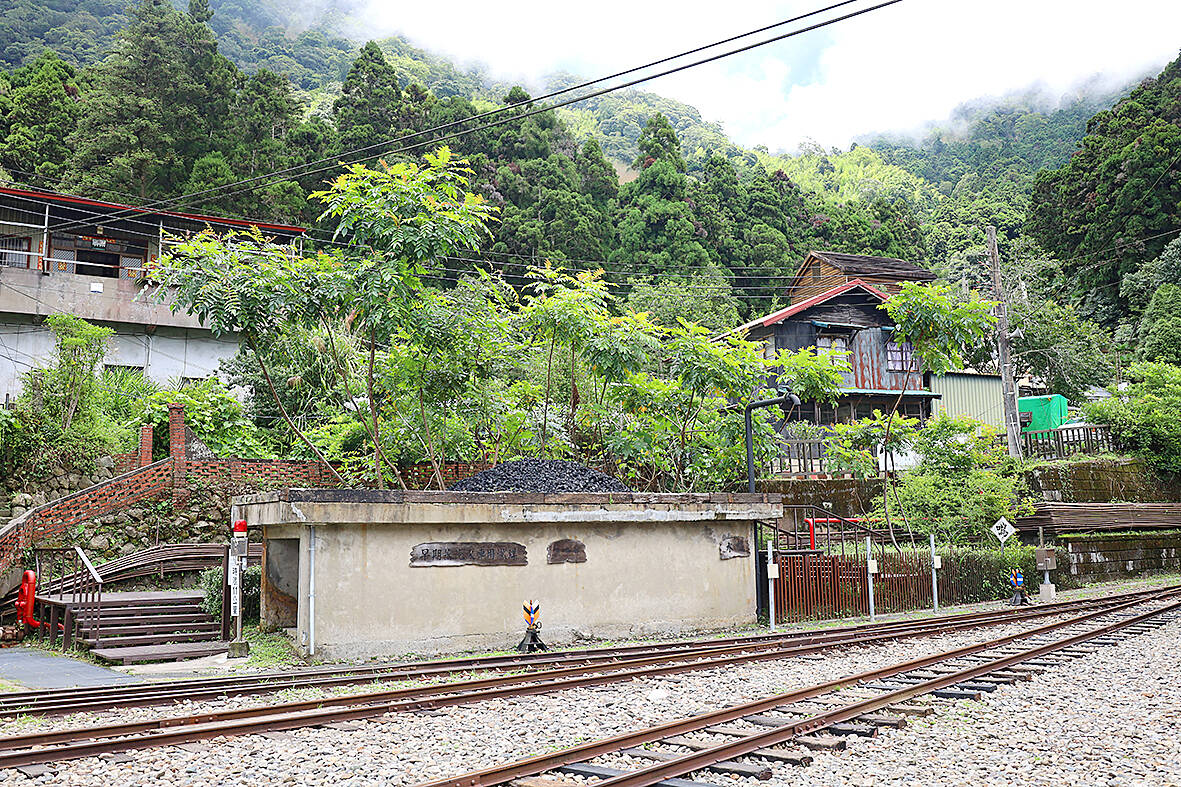
Photo: Thomas Bird, Taipei Times
Turquoise-colored Jhuci Station (竹崎車站) marks the unofficial end of suburbia, as we cross a truss bridge and begin trekking towards the tree-studded mountains.
The genius for laying a narrow-gauge track zigzagging into near-vertical hills was lost once humankind entered the automotive age.
Nowadays, the bus takes little over two hours to get to Alishan. By contrast, the train takes almost five hours.
But as the old adage goes, “it’s about the journey, not the destination.”
All eyes are fixed on the windows when we begin snaking up an incredibly steep mountain face.
Our passage brings us into close company with towering cypresses enshrouded in mist, bringing to mind illustrations of the enchanted forest I’d loved as a kid.
Occasionally, serpent eagles are visible circling overhead. Distant Chiayi, too, is intermittently in eyeshot through forest clearings.
“We share the perspective of birds,” I write in my diary.
Somewhere past Dulishan (獨立山) the Alishan Express passes the 800-meter mark. A trackside sign indicates we’ve left “the tropical zone” and are now entering “the subtropical zone.”
We chug into the quaint mountain town of Fencihu (奮起湖) two hours after setting out.
As the train wheezes to a halt, passengers gasp and chatter, the prospect of lunch and a hilltop stroll seducing us one by one.
The weather is notably more alpine, the air scented with the perfume of plants.
MOUNTAIN HIGH
Since the Japanese founded the railway, “Fencihu has been the primary midpoint stop,” I read on a tourist sign. The town lays claim to having the highest “old street” in Taiwan at 1,405 meters.
This translates into what has become a tourist town par excellence.
Along Old Street, stores are piled high with local delicacies like mountain-grown wasabi and plum wine. A number of choice eateries have popped up catering to tourist traffic from both road and rail.
Once fed and watered, I conduct a quick tour of the locomotive shed located at the end of the tracks before heeding the train conductors whistle and rushing back for the remainder of the journey.
Our view is in constant flux. We pummel through tunnels — there’s a total of 50, notably tunnel 42, which has been decorated with an aboriginal flower motif — and clunk over wooden bridges.
We steer through thick woodlands and veer along the edge of mountain precipices in view of high-altitude tea plantations.
At over 2,000-meters above sea level, the train makes the first of three switch backs as it follows an Z-shaped route through the mountain forest.
Passing Sacred Tree Station (神木站) we roll into Taiwan’s pre-eminent mountain resort town right on schedule, alighting just before 3pm.
THE SUNRISE EXPRESS
Alishan Station is located at the heart of Alishan Forest Recreation Area, so all the amenities one might expect to find — a visitor information center, a post office, even a branch of 7-Eleven — are in close proximity.
Forest trails fan out from the station forecourt leading to various scenic points and there’s plenty of time for an afternoon hike.
But this is not the end of the line.
To complete the railway, one must shake themselves awake the following morning to catch the train to Chushan Station (祝山車站), a further three kilometers away.
Departure times change daily. Mine leaves at 4.20am.
At an elevation of 2,451-meters above sea level, Chushan has the highest altitude of any railway station in Taiwan. But that’s not why people get out of bed at an ungodly hour.
The train deposits passengers right outside a viewing point.
It is cold at this hour, and dark too. An eerie quiet is maintained amongst the crowd.
Change is incremental, as black becomes purple by degrees. Birdsong pipes up just before the sun is revealed, hidden behind a mountain, it beams, glorious, across the Formosan rooftop.

On April 26, The Lancet published a letter from two doctors at Taichung-based China Medical University Hospital (CMUH) warning that “Taiwan’s Health Care System is on the Brink of Collapse.” The authors said that “Years of policy inaction and mismanagement of resources have led to the National Health Insurance system operating under unsustainable conditions.” The pushback was immediate. Errors in the paper were quickly identified and publicized, to discredit the authors (the hospital apologized). CNA reported that CMUH said the letter described Taiwan in 2021 as having 62 nurses per 10,000 people, when the correct number was 78 nurses per 10,000

As we live longer, our risk of cognitive impairment is increasing. How can we delay the onset of symptoms? Do we have to give up every indulgence or can small changes make a difference? We asked neurologists for tips on how to keep our brains healthy for life. TAKE CARE OF YOUR HEALTH “All of the sensible things that apply to bodily health apply to brain health,” says Suzanne O’Sullivan, a consultant in neurology at the National Hospital for Neurology and Neurosurgery in London, and the author of The Age of Diagnosis. “When you’re 20, you can get away with absolute

May 5 to May 11 What started out as friction between Taiwanese students at Taichung First High School and a Japanese head cook escalated dramatically over the first two weeks of May 1927. It began on April 30 when the cook’s wife knew that lotus starch used in that night’s dinner had rat feces in it, but failed to inform staff until the meal was already prepared. The students believed that her silence was intentional, and filed a complaint. The school’s Japanese administrators sided with the cook’s family, dismissing the students as troublemakers and clamping down on their freedoms — with

As Donald Trump’s executive order in March led to the shuttering of Voice of America (VOA) — the global broadcaster whose roots date back to the fight against Nazi propaganda — he quickly attracted support from figures not used to aligning themselves with any US administration. Trump had ordered the US Agency for Global Media, the federal agency that funds VOA and other groups promoting independent journalism overseas, to be “eliminated to the maximum extent consistent with applicable law.” The decision suddenly halted programming in 49 languages to more than 425 million people. In Moscow, Margarita Simonyan, the hardline editor-in-chief of the